Leading gaming studio VulcanForged continues the lore of its flagship MMORPG VulcanVerse with The Desert of Notus! Today Mar. 2, Vulcan Forged invites everyone to meet this hot, arid, and deadly land, the Desert of Notus!
Forging A New Olympus
Notus is a land that hides its secrets well, often under its shifting sands, but a wise scholar in search of information about this land would know that information exists about its past, recorded in scripts held in the House of Records and Vulcan City’s libraries. The template for Vulcan’s new blockchain-based Olympus, VulcanVerse itself, existed in the deep past, in times of myth and mystery. In creating this new digital VulcanVerse, Vulcan, in all his godly genius, took the best of the VulcanVerse of old, that of the map we know so well, and recreated it, opening the gates for today’s mortals to enter. This new VulcanVerse is smaller than the ancient place, and the Desert of Notus, whilst familiar to the hypothetical traveler existing in both times, held many ancient secrets…
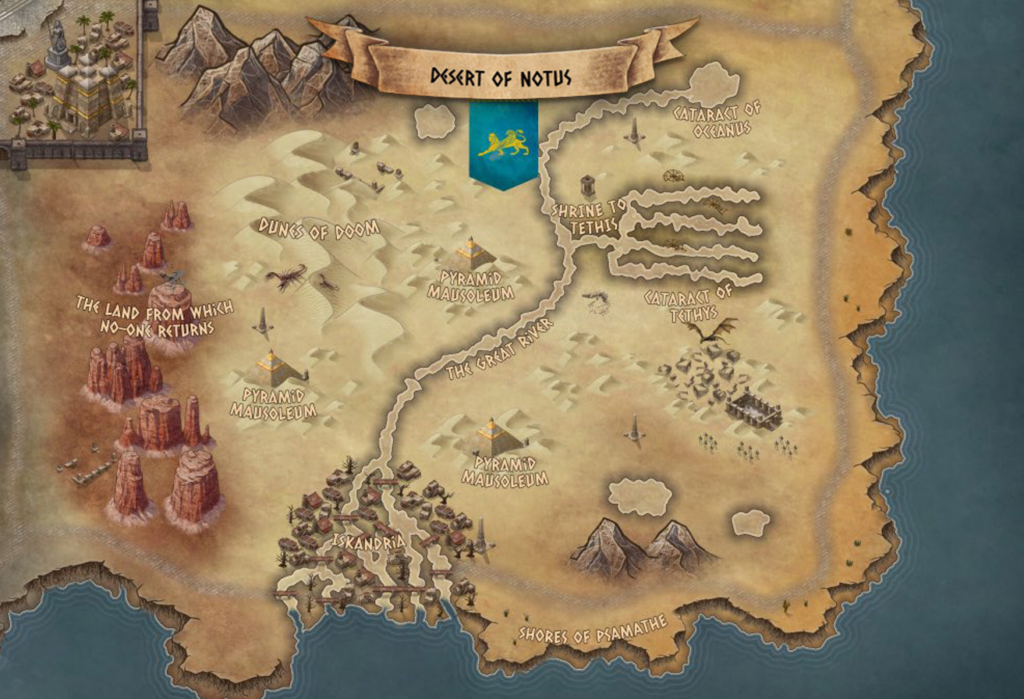
With the arrival of mortal man, Vulcan removed many of the mountains and dunes, creating a large, flat plain. It was as though much of the old terrain was never there to begin with, except where Vulcan did wipe clean, he allowed the strange power of the former sacred places — the former city of Iskandria, the Shores of Psamathe, the Land from which No-one Returns, to remain. With the arrival of humans and the use of their crude tongues, these special places have been named “buff zones”. Many mortals have clambered for ownership of these areas, where they or their Vulcanite would wield increased power.

Vulcan may have wiped much of the land — but the most important places remain, albeit in some cases, in forms a little removed from their ancient shape. These are what the modern mortal residents of VulcanVerse call “landmarks,” and these places remain areas of great power and, in many ways, places of ethereal mystery. Today, these landmarks include the three pyramid mausoleums and the Shrine to Tethys.
To begin to understand the sandy expanse of the desert, we must look to the past and the information that has been handed down to us…
The Lore of the Desert of Notus
Notus of the past was much larger than the land we know today and much more dangerous. We begin our exploration into the northwest, where the Aetnaean Mountains, known colloquially as the “anvils of Vulcan”, climb from foothills to great peaks grazing the sky.
Hidden high in the mountains could be found the kingdom of Saesara, where terraces of fertile farmland ran in layers up the side of a fertile valley, overlooked by a gleaming white palace surrounded by a moat.
High up among the upper reaches of the Aetnaean mountains was the coldest place in Notus, the peaks were often covered in snow, and the more exposed areas of Saesara itself were cold and windswept compared to the mild climate in the valley.
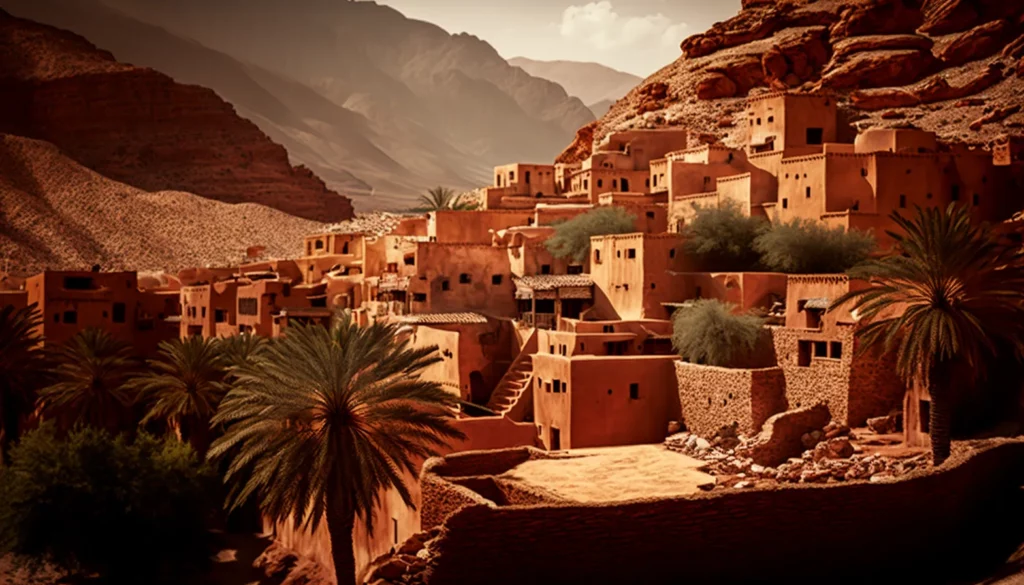
Not too far a distance below, nestled in the valley, a small village could be found with an active market and a shrine. A traveler descending the mountains here to journey east would climb down to foothills that give way to the desert, flat and devoid of life. A long journey towards the coast would lead to former farmland, once green with such a plentiful supply of grain to feed a large part of the surrounding area. Ancient books and scrolls tell of how, over time, it transformed into a barren wilderness, neglected, irrigation channels sand-choked.
The Cataract of Oceanus
In the far north of Notus, the Great River used to flow out from the mountains and over the one thousand-meter-high cliffs to the plain below — this area was the Cataract of Oceanos. History tells us that at some point, the river dried up, and the once spectacular waterfall ceased to be. It was said in ancient days that “even the thunderous voice of Zeus could scarcely be heard over the waterfall that cascaded down in raging torrents at the Cataract of Oceanos.”

The Great River fed the Potamegalos. From the Cataract of Oceanos, it traveled south, and if following its course, after much walking, you would arrive at a shrine devoted to the goddess of rivers, Tethys. Tethys was for many years revered in the desert, as you would expect, it was she who drew water from Oceanus through the various channels of the earth, bringing fresh water to drink, to grow grain and nourish the earth, though lore records a time when the Potamegalos dried up for countless years, and she was almost forgotten.
The Shrine & Cataract of Tethys
In the central east of the desert, following the route of the Great River south, was a shrine devoted to the goddess Tethys, standing near the river bank shortly before the rushing river met the Cataract of Tethys. Which was named first, the shrine or the Cataract? Only a local antiquarian and devotee of Tethys would be able to answer. The shrine saw the best and worst of times; when the Great River torrented past here, the shrine was heavily used, locals made regular offerings, and devotees would make pilgrimages to this area. Years after the river ran dry, Tethys was forgotten by many.
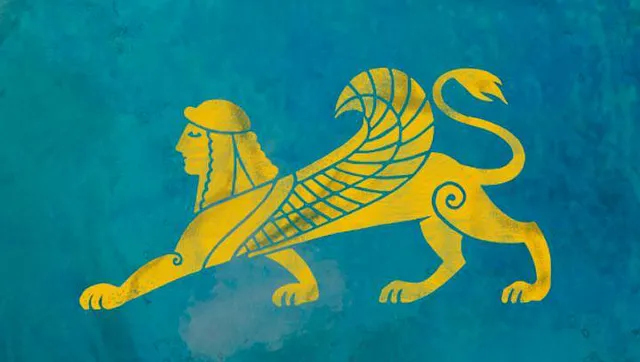
The Cataract of Tethys was situated approximately halfway through the Great River’s journey to the sea and was used in ancient times to divert waters into the nearby irrigation canals — huge water wheels captured the power of the raging torrents.
The Amazons
The Amazons were a nomadic tribe who could be found following the seasonal migration routes of their herds, routes that sometimes saw them travel across VulcanVerse to other quadrants. Some histories paint the Amazons as common bandits, but their historic pedigree could certainly not be questioned, the Amazons were feared by many kingdoms. A ruthless, all-female warrior race, they were known for raiding, taking slaves, their prowess in battle, their powerful chariots, and their skill at arms.

Men were only tolerated among them — for short periods if they were of use; commonly, traders and slaves. Female babies were kept and raised, males were either sold or left on a hillside as they had no use within the tribe.
The Dunes of Doom
In the central-west desert, a traveler would find the Dunes of Doom. Miles of dunes with, if the stories are correct, a great crater at their center. The historian and sage, Iamtos wrote a book titled ‘Typhon, King of Monsters’. The book describes an epic battle between Zeus and Typhon that resulted in the creation of the Dunes of Doom, the crater being the spot where the desert sands were thrown into the air forming the dunes when one of Typhon’s eyes landed there having being struck out by a thunderbolt of Zeus. The dunes were the home of scorpions, and it is said the legendary giant scorpion Venomtail resided in these parts.
Next, we travel south, towards the Great Pyramid and beyond.
About VulcanVerse
VulcanVerse is a flagship metaverse and an MMORPG game of the Vulcan Forged ecosystem where players can create their own quests and adventures, battle against other Vulcanites, forage for NFTs, and truly own their digital assets in the form of NFTs.
Developed by Vulcan Forged on the Elysium blockchain, VulcanVerse is powered by the $LAVA token, which you can earn by completing most in-game actions.

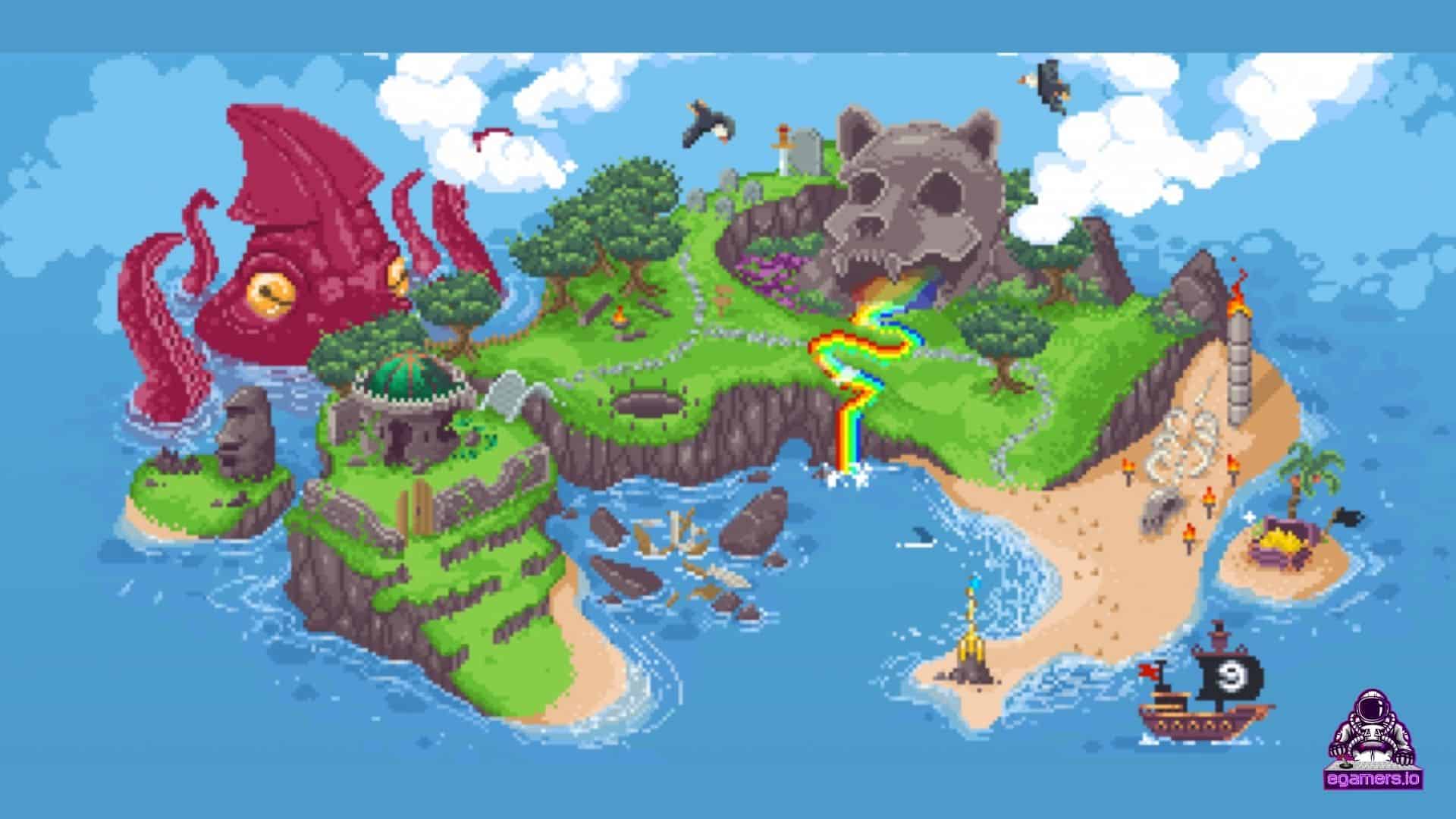

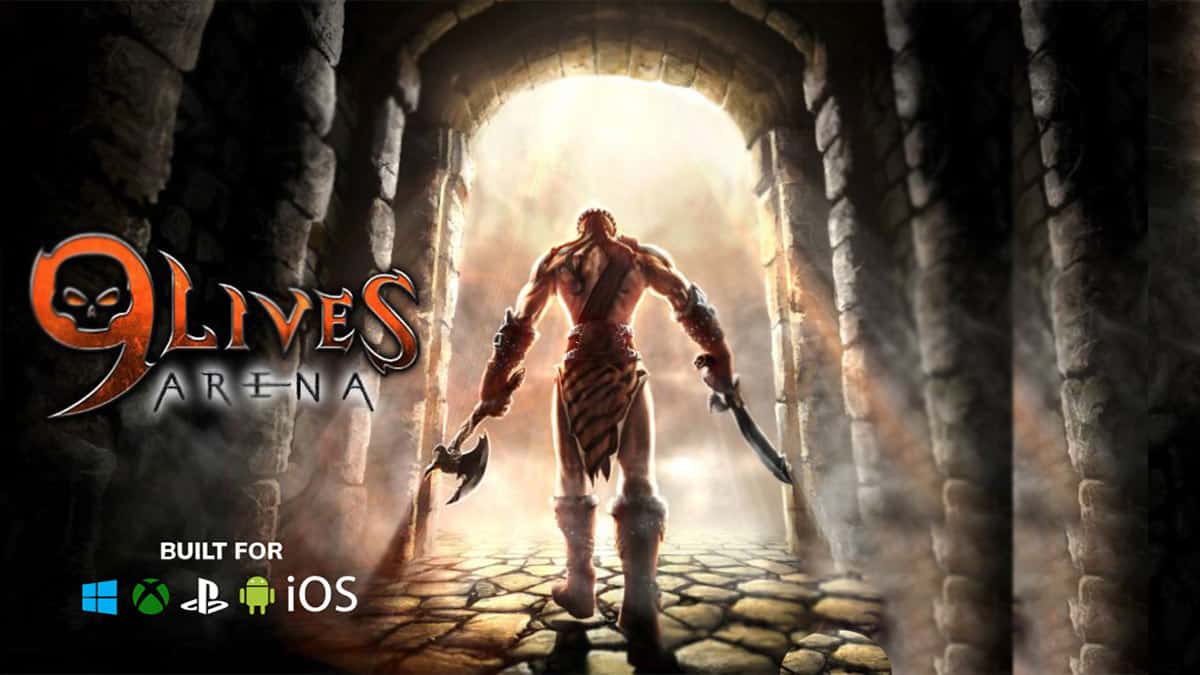


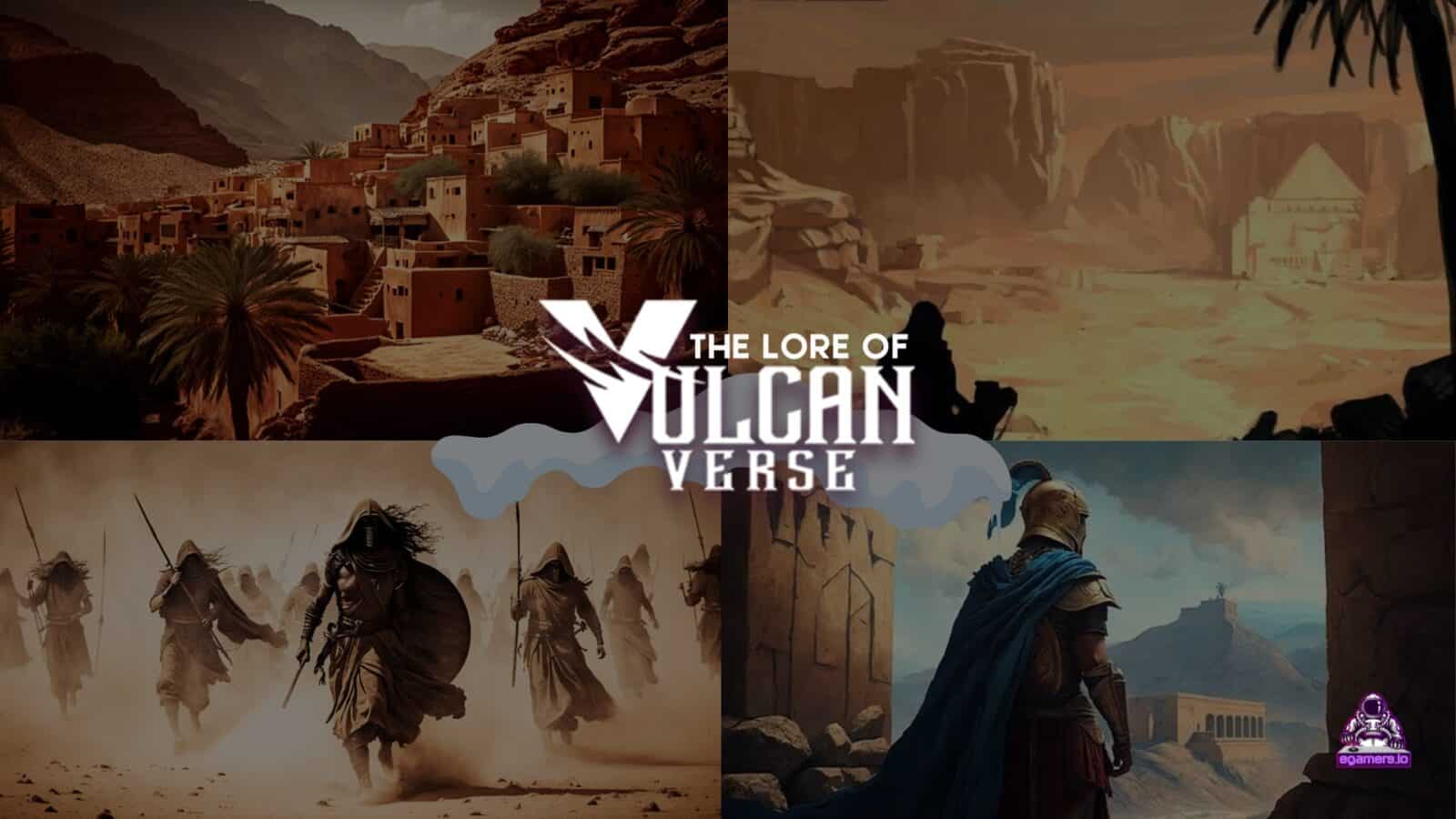



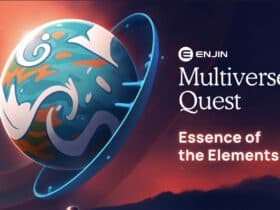






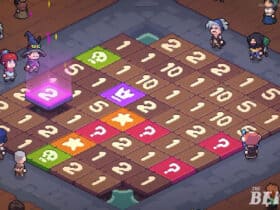


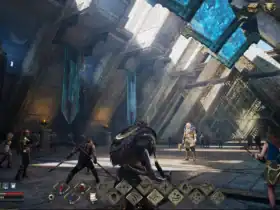



STAY ALWAYS UP TO DATE